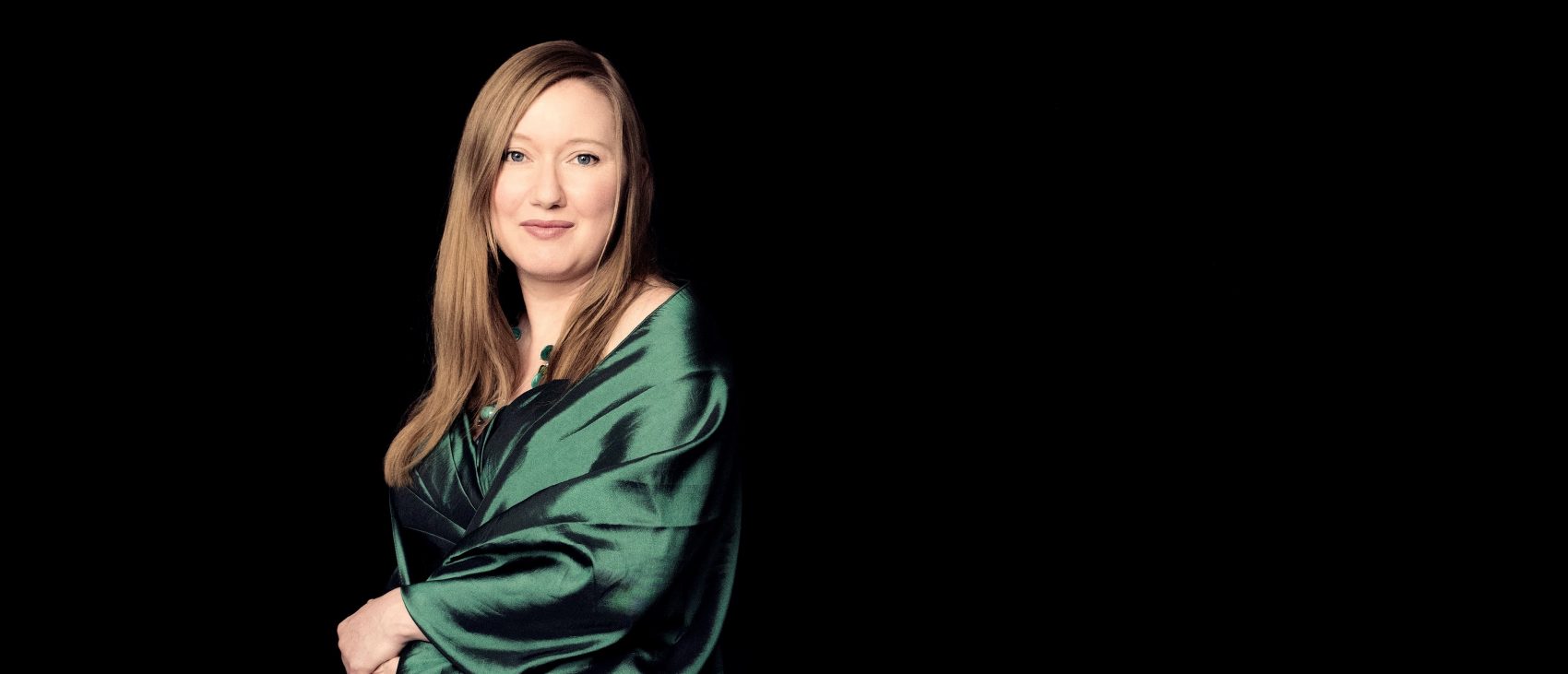Christ Church Cathedral | Map
Suzie LeBlanc, soprano; Dorothee Mields, soprano; Alex Potter, alto; Samuel Boden, tenor; Matthew Brook, bass-baritone; Lucas Harris, theorbo; Michael Jarvis, organ and harpsichord
The ancient Song of Songs originated as erotic love poetry around 2500 years ago. It was interpreted by both Judaism and Christianity as an allegorical understanding of the believer’s relationship with God. In Christianity, musical settings of the text became particularly popular in 16th and 17th Centuries, when word expression and moving the listener became increasingly important. Indeed, these settings go beyond concepts of “sacred” or “secular”: Religious belief, longing, sensuality and eroticism become inextricably combined and perfectly expressed by this stunning music. This programme features five of the world’s best vocal soloists specializing in the vocal chamber music of the 17th and 18th centuries. Programme designed by Alex Potter. Programme to include music by Schütz, Monteverdi, Guerrero, Morales and more.
“Matthew Brook… turns anything he sings into gold.” – The Guardian
To download/view this programme, please click here.
This concert is generously supported by the EMV Board of Directors.
PROGRAMME
— A CONCERT DESIGNED AND LED BY ALEX POTTER —
(Song of Songs Chapter 1 complete)
Giovanni Pierluigi da Palestrina: Osculetur me
Palestrina: Trahe me post te
Reading: Song of Songs 1:1-8
Palestrina: Si ignoras te
Reading: Song of Songs 1:8-15
Palestrina: Ecce tu pulcher
(End of Song of Songs Chapter 1 complete)
Alessandro Piccinini: Toccata XI (lute solo)
Maria Xaveria Perucona: Propera veni dilecte mi
Alessandro Grandi: Surge propera
Reading: Song of Songs Chapter 5 complete
Orlande de Lassus: Anima mea liquefacta est
INTERVAL
Reading: Song of Songs 2:1-13
Claudio Monteverdi: Ego flos campi
Cristóbal de Morales: Ecce amica mea
Girolamo Frescobaldi: Toccata Terza (harpsichord solo)
Giovanni Antonio Rigatti: Surge Columba
Reading: Song of Songs 2:14-17
Lucrezia Orsina Vizana: Sonet vox tua
Giovanni Rovetta: Surge propera
Reading: Song of Songs Chapter 3 complete
Domenicho Mazzochi: Dialogo della cantica
PROGRAMME NOTES
Singing Evensong in my youth brought me into daily contact with Christianity’s Judaic heritage. From its opening paraphrasing of Psalm 51, “O Lord open thou our lips”, the service is steeped in the language of the Hebrew scriptures. Indeed, through the singing of psalms and anthems, as well as hearing readings, the Old Testament (essentially identical to the Hebrew Tanakh) became increasingly familiar to me. Thanks to Evensong, as a child I already knew about well-known figures like Abraham, Moses and Ruth, and the story of Exodus, for example. I also learned about the less familiar: Og the King of Bashan, Nebuchadnezzar II, as well as the fact that Noah’s Ark was exactly 300 cubits long!
Texts from the Song of Songs were less frequently encountered, but bound up with very fond memories of performing wonderful pieces like Patrick Hadley’s My beloved spake, Palestrina’s Surge amica mea, John Ireland’s Greater love hath no man, and William Walton’s Set me as a seal – a work I sang numerous times at weddings, and which provided much-needed beer money as a student.
When I was a child, I thought as a child and didn’t really consider the peculiarity of the Song of Songs belonging to the religious canon. The transition to adulthood, of course, also gave me a more understanding of the text, but at the same time led me to wonder what this kind of erotic sensuality was doing in the Bible! Scholars now generally agree that it was originally Hebrew love poetry composed, adapted and expanded over generations, between 500 and 200 BCE, with recognizable Egyptian, Persian and Hellenistic influences. The Hebrew title Schir ha-Schirim (“Song of Songs”) is used in a superlative sense, “the most beautiful of songs”, (similar to “Holiest of Holies”). The poem’s place in both the Jewish and Christian scriptures was established in late antiquity, significantly thanks to Rabbi Akiva (50-135 CE), who interpreted it as an allegory of the love between God and Israel. Akiva’s writing was then highly influential on the Christian theologian Origen (184-253 CE), who regarded the bridegroom as representing Christ and the bride being the believer.
Against this theological background it is hardly surprising that there was a huge proliferation of musical settings of the Song of Songs in the sixteenth and seventeenth centuries. In the early sixteenth century, the Reformation split the Western Church into Roman Catholic and Protestant factions, both vying for the souls of the believers. Alongside killing and torture, both sides readily embraced mysticism to win over hearts and minds. With its potent sensuality, the Song of Songs became a central resource for composers working in both traditions.
Within tonight’s concert, we can hear how the text was used in different ways by composers. In Palestrina’s and Monteverdi’s settings, we hear unchanged settings of the original texts, while in settings by Grandi and Rigatti we might observe how composers also drew together non-consecutive verses from different parts of the collection, thus in effect creating their own texts. Finally, a third type is represented by those settings which use the language of the Song of Songs, but change and paraphrase it to express something explicitly Christian, as exemplified in the Vizana and Mazzochi.
More radically different than the types of text is the way the composers set them. The works in the can roughly be divided into “Renaissance” and “Baroque”, or to use the terminology of the time: prima and seconda pratica. In the prima pratica several a cappella voices overlap and imitate each another according to strict rules of consonance and dissonance. The text is frequently not declaimed simultaneously. Renaissance composers such as Morales, Lassus, and particularly Palestrina were three of the greatest exponents of this polyphonic style. By contrast, the seconda pratica, which emerged around 1600, prioritized a more rhetorical delivery of the text. To this end, the older rules of harmony were relaxed and the words became more clearly audible. The music is frequently just with one voice and accompanying instruments (in this case, lute, harpsichord or organ). Monteverdi, Grandi and Rovetta were key figures of this radical new, “modern” way of composing music, which marked the beginning of what we now term “Baroque”.
On one level, this concert might thus appear to be an incompatible juxtaposition of styles. In fact, composers of the seconda pratica continued to write in the polyphonic style of the prima pratica, and routinely performed sixteenth-century music alongside their own music well into the eighteenth century. Claudio Monteverdi, for example, published an a cappella mass (the Missa In illo tempore) in the same publication as his famous 1610 Vespers. We also know that in 1614 he ordered six volumes of polyphonic masses for St. Mark’s Venice. Even J.S. Bach still performed motets by Renaissance composers like Lassus and Gallus alongside his own music in Leipzig in the 1720s. This concert is therefore ‘historical’ in its approach in terms of presenting the two styles in direct juxtaposition, and hopefully offering an insight into their complementarities.
The Song of Songs is very unusual in the wider context of scripture and historical documents of its time, in that we are often directly addressed by the rarely heard female voice. Almost equally unusual in the early modern Period was music written by women, who generally lacked the training and the opportunities to become composers. However, as much of the text of the Song of Songs is spoken by a woman, it seems only appropriate to include works by female composers. Maria Xaveria Perucona and Lucrezia Orsina Vizzana were both nuns in Northern Italy who wrote in the modern style under the influence of Claudio Monteverdi and others. I am very grateful to Suzie Le Blanc for suggesting including works by these two female composers.
The spoken texts are principally drawn from the King James Bible Translation (1611). While this was primarily intended to present the most accurate translation of the Bible, it represents some of the most beautiful and influential language in the history of English. The Old Testament in the King James was translated by a team of twenty-six scholars, who used Daniel Bomberg’s Hebrew Rabbinic Bible (1524-5) as the basis for their work. When I had just moved to Basel to study, I recall waxing lyrical to my Israeli flat-mate Uri about the King James Bible, to which he replied, “Yes, it is very nice. But the Hebrew is much more beautiful!” It is therefore partly thanks to Uri Smilanski that you will hear the opening and closing verse of each section of spoken text in both English and the original Hebrew.
I am well aware that tonight’s program could be seen as confusingly heterogeneous, with Hebrew from the Tanakh, Latin for the Roman Catholic Liturgy, English from the Protestant King James Bible, music of the prima and seconda pratiche, and many different male and female composers. Yet, at the same time, all these elements are profound æsthetic responses to the Song of Songs, which has moved, provoked and inspired in different ways for over two millennia — and will hopefully move, provoke and inspire both the performers and you, the audience, this evening.
— Notes by Alex Potter
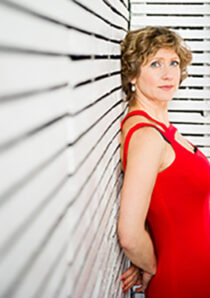
Suzie LeBlanc, soprano
Born in Acadia, the charismatic soprano provides convincing evidence for the popularity of Early Music while exploring French art song, lieder, contemporary repertoire, and Acadian traditional music. She has performed on famous stages of the world in recitals and opera and has made over 60 recordings ranging from medieval to contemporary music.
Many of her recordings received international praise and prestigious awards, notably a Grammy award for Lully's Thésée and several Opus awards. In addition to her passion for Early Music, she is an advocate for Canadian contemporary music. Her album “I am in need of music” on poems by Elizabeth Bishop won ECMA’s Best Classical Album and her album “mouvance”, which unites the words of 13 contemporary Acadian poets to the music of Jérôme Blais, was nominated for a JUNO in the category album of the year – solo artist, in 2024. Her most recent album with the Viadana Collective explores the sacred works by Lodovico Viadana and was released on May 1st, 2024, on the Passacaille label.
Appointed to the Order of Canada in 2015, she was recently awarded the rank of Knight of the Order of Arts and Letters from the French Republic. As the Artistic and Executive Director of Early Music Vancouver, she enjoys presenting a wide range of artists in the field of historical performance and welcomes the opportunity to sing from time to time.
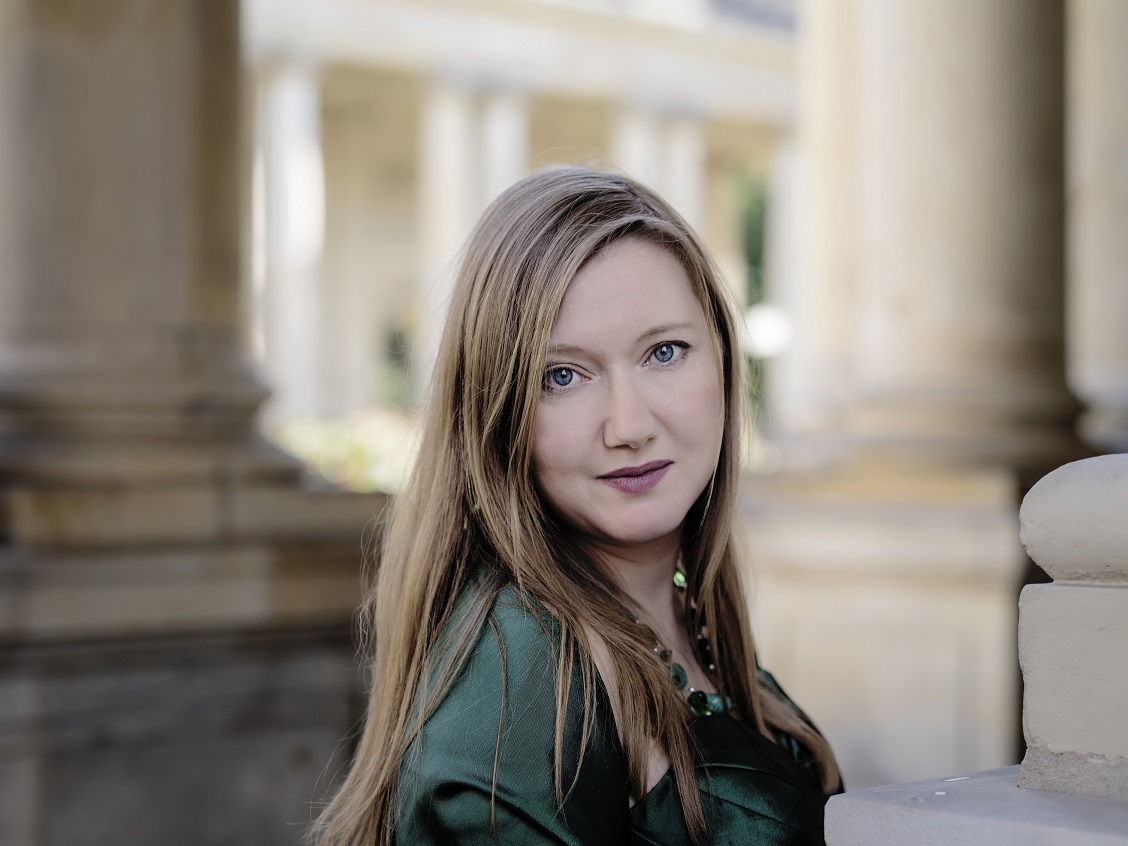
Dorothee Mields, soprano
Dorothee Mields is one of the leading interpreters of 17th- and 18th-century music and is beloved by audiences and critics alike for her unique timbre and moving interpretations.
She appears regularly with the Collegium Vocale Gent, Netherlands Bach Society, L’Orfeo Barockorchester, Freiburger Barockorchester, RIAS Kammerchor, Bach Collegium Japan, Orchestra of the 18th Century, Lautten Compagney Berlin, Tafelmusik Baroque Orchestra Toronto, The English Concert and Klangforum Wien under conductors such as Stefan Asbury, Beat Furrer, Michi Gaigg, Paul Goodwin, Philippe Herreweghe, Emilio Pomàrico, Hans-Christoph Rademann, Andreas Spering, Masaaki Suzuki and Jos van Veldhoven.
Dorothee Mields is a welcome guest at international festivals, including the Leipzig Bach Festival, Suntory Music Foundation Summer Festival in Japan, Boston Early Music Festival, Flanders Festival, Wiener Festwochen, the Handel Festival in Halle, Musikfestspiele Potsdam, Styriarte Graz, Niedersächsische Musiktage, Musikfest Bremen, Mainzer Musiksommer and Mosel Musikfest.
She is a devoted chamber musician and offers a range of highly interesting projects such as “Lord Nelson at the river Nile” (music by Haydn and contemporaries dealing with the battles of Lord Nelson), “White as Lillies was her Face” with songs by John Dowland combined with texts by Heinrich Heine, “Mort exquise, mort parfumée” with French impressionistic compositions, “Duft und Wahnsinn” (fragrance and lunacy) together with Hille Perl, viola da gamba, and Lee Santana, lute, as well as “Birds” with flutist Stefan Temmingh.
A steadily growing discography with several award-winning recordings documents her artistic achievements. “Inspired by Song” and “Birds” with Stefan Temmingh, “Handel” with Hille Perl, Monteverdi “La dolce vita” with the Lautten Compagney Berlin and Wolfgang Katschner (all DHM), Bach “Kantaten für Solo-Sopran” with L’Orfeo Barockorchester and Michi Gaigg and Boccherini Stabat mater with the Salagon Quartett (both Carus) have been especially well received.
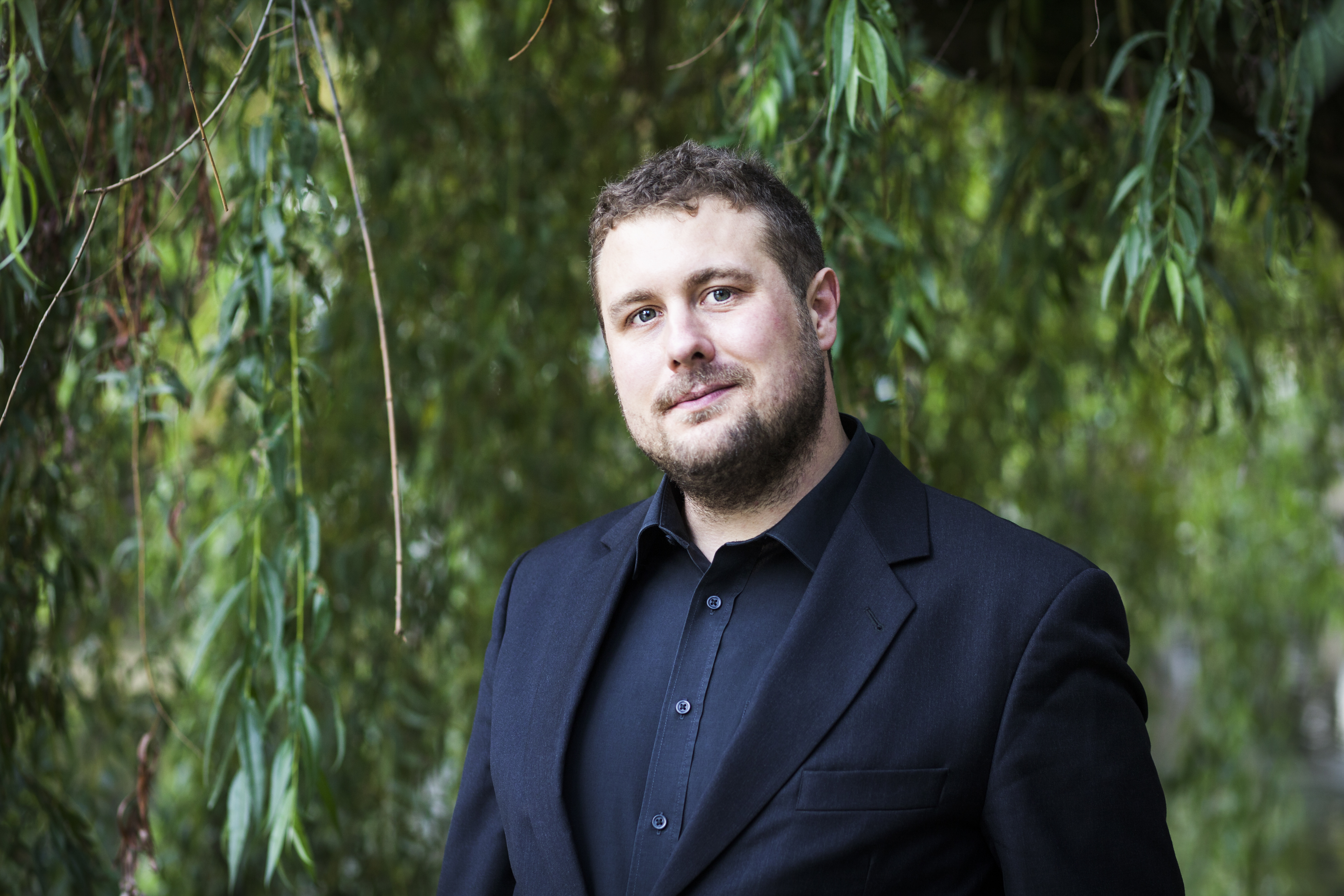
Alex Potter, alto
My mother always sang to me when I was a small child, which is why I began to sing. Her voice for me was intensely bound together with emotion, which will always remain with me. As a cathedral chorister, this emotional basis became intertwined with a fascination for text and symbolism in music, expanded upon and deepened during studies in Oxford and Basel. Remaining faithful to these origins over nearly twenty years in the profession, I continue to develop as a singer, musician and human, changed and enriched by the joy and sadness which life brings.
Nowadays you are most likely to hear me somewhere with Bach, although I also love to sing other music. When not performing, you will find me at home with my family, reading something geeky, wasting time on the internet, or cooking. Sharing and exchanging with other people, be it music, food, or conversation, is one of the great pleasures of life.
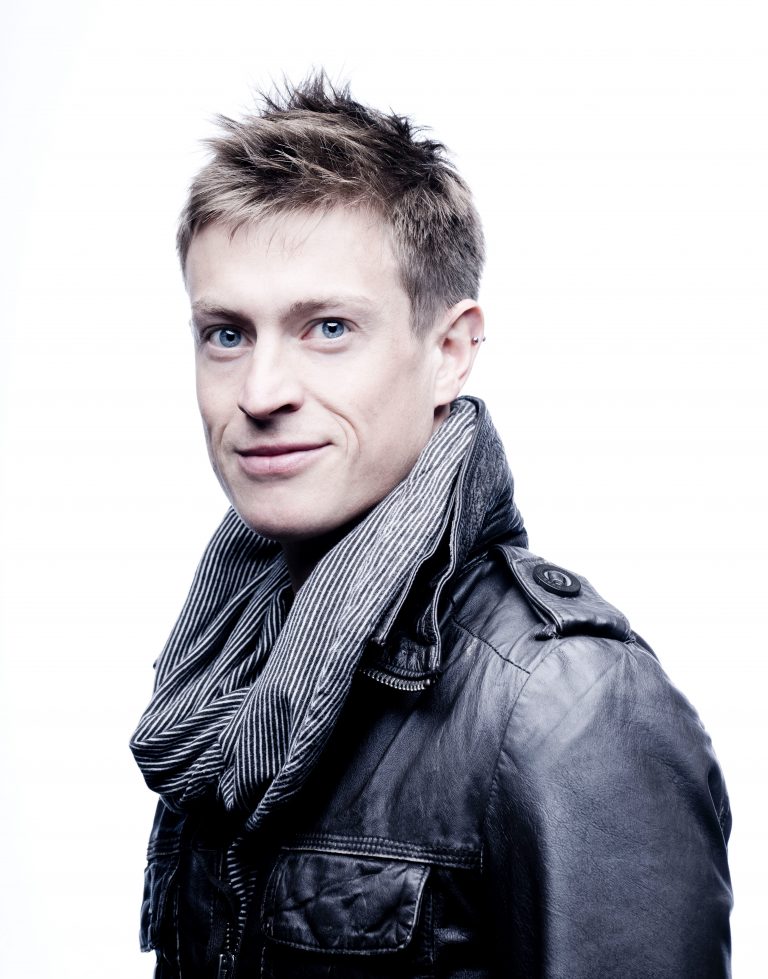
Samuel Boden, tenor
Having originally trained and worked as a chef, British tenor Samuel Boden changed his career path and studied singing under John Wakefield at Trinity Laban Conservatoire. He received numerous awards including the Ricordi Opera Prize and the Derek Butler London Prize as well as awards from the Harold Hyam Wingate Foundation, the Samling Foundation and the Arts and Humanities Research Council.
Throughout college and after leaving in 2008, he worked extensively in the UK and internationally with many leading ensembles, including Ex Cathedra, The Gabrieli Consort, The Sixteen and the Orchestra of the Age of Enlightenment. He has since become increasingly in demand as a soloist, which has led to a variety of experience, both on the concert platform and on the opera stage, performing music from a wide range of styles and eras. This ranges from Roman laments and Elizabethan lute songs, through to West Side Story for the 50th Anniversary World Tour – however, his grounding in choral music has contributed to his deeper involvement with, and love for, early music, and he has performed operas and concerts of this repertoire extensively at home and abroad. Early opera engagements include The Fairy Queen for Theater St Gallen and Glyndebourne; Anfinomo The Return of Ulysses for English National Opera at the Young Vic; The Indian Queen at Opéra Théâtre de Métropole, Metz and the title role of Cavalli L’Ormindo for the Royal Opera/Shakespeare’s Globe collaboration in their inaugural season at the Sam Wanamaker Playhouse.
Samuel’s love of languages, most notably French, has led to an interest in French Baroque. As a high light lyric tenor, he has been exploring the “Haute Contre” repertoire and enjoys a busy schedule of such performances. This repertoire has included the title role in Charpentier Actéon for Opéra de Dijon and Opéra de Lille / Emanuelle Haïm; Hippolyte Hippolyte et Aricie with Ensemble Pygmalion / Raphäel Pichon, and Abaris Les Boréadeswith Les Musiciens du Louvre / Marc Minkowski at the Aix en Provence festival.
On the concert platform Samuel has appeared with the BBC Symphony Orchestra for Zemlinsky with John Storgards, Argento with Giancarlo Guerro and Carl Rütti with Stephen Jackson; Stravinsky with Sakari Oramo at The Proms; the Hallé Orchestra / Robert Howarth for Messiah; the Royal Northern Sinfonia / Thomas Zehetmair for Mozart and Britten; the Bournemouth Symphony Orchestra / Curnyn – Handel; the Bilbao Symphony Orchestra / Howarth; the Frankfurt Radio Orchestra / Emmanuelle Haïm for Rameau and Purcell; Kristiansand Symphony Orchestra / Nicholas Kraemer with Bach and Handel; The Monteverdi Choir / John Eliot Gardiner for Bach; Collegium Vocale Gent / Philippe Herreweghe with Lassus, Monteverdi and Purcell; Le Concert d’Astrée / Haïm for Monteverdi and Charpentier and Ex Cathedra / Jeffrey Skidmore – Bach, Carissimi, Charpentier.
In current recital programmes Samuel performs lute song repertoire with Paula Chateaueuf and Britten, Fauré, Debussy and Hahn with Iris Torossian, harp. Samuel’s growing discography encompasses works by Monteverdi, Charpentier, Daniel Purcell, Rameau, Bach alongside Tansy Davies and Alec Roth on Hyperion, Erato, Archiv, OAE Released, Nimbus, Resonus Classics, NMC and Signum.
Amongst his recent and forthcoming engagements are Bach with the Rotterdam Philharmonic / Natalie Stutzmann, the title role Rameau Pigmalion with Pinchgut Opera Sydney, Telemaco Il Ritorno d’Ulisse in Patria at The Round House for the Royal Opera House and creating a role in George Benjamin’s Lessons in love and violence at the Royal Opera House, Covent Garden followed by performances in Amsterdam, Hamburg, Lyon and Paris.
Outside of his performance life, Samuel is an extreme sports enthusiast and enjoys snowboarding, rock climbing and downhill mountain biking.

Matthew Brook, bass-baritone
Matthew Brook has appeared widely as a soloist, and has worked extensively with conductors such as Sir John Eliot Gardiner, Richard Hickox, Sir Charles Mackerras, Harry Christophers, Christophe Rousset, Paul McCreesh and Sir Mark Elder, and many ensembles including the Philharmonia, LSO, the St Petersburg Philharmonic,the RPO, Freiburg Baroque Orchestra, Orchestra of the Age of Enlightenment, the English Baroque Soloists, the Gabrieli Consort & Players, the Sixteen, the Royal Northern Sinfonia and Orchestre National de Lille.
Recent and future highlights include Purcell’s The Fairy Queen and Dido and Aeneas with the Handel and Haydn Society, Bach’s St John Passion with the St Paul Chamber Orchestra, Haydn’s Creation with the City of Birmingham
Symphony Orchestra, Bach’s Magnificat and Brahms’ Triumphlied with the Cincinnati Symphony Orchestra, Il Re di Scozia Ariodante with the Staatstheater Stuttgart and on tour with the English Concert, Bach’s B minor Mass at the Al Bustan Festival in Beirut and with Les Violons du Roy in Québec, Fauré’s Requiem with the Royal Philharmonic Orchestra, Mozart’s Requiem with the Fryderyk Chopin Institute in Warsaw, a tour of Bach cantatas with the Monteverdi Choir and Sir John Eliot Gardiner, and with the Nederlandse Bachvereniging and Early Music Vancouver, a tour of Bach’s St Matthew Passion with the Orchestra of the Age of Enlightenment, and with Gli Angeli Genève, Elgar’s The Dream of Gerontius with the Indianapolis Symphony Orchestra, Tippett’s A Child of Our Time at Festival St Denis, and the roles of Herod and Father in Berlioz’s L’Enfance du Christ with the Melbourne Symphony Orchestra and Sir Andrew Davis.
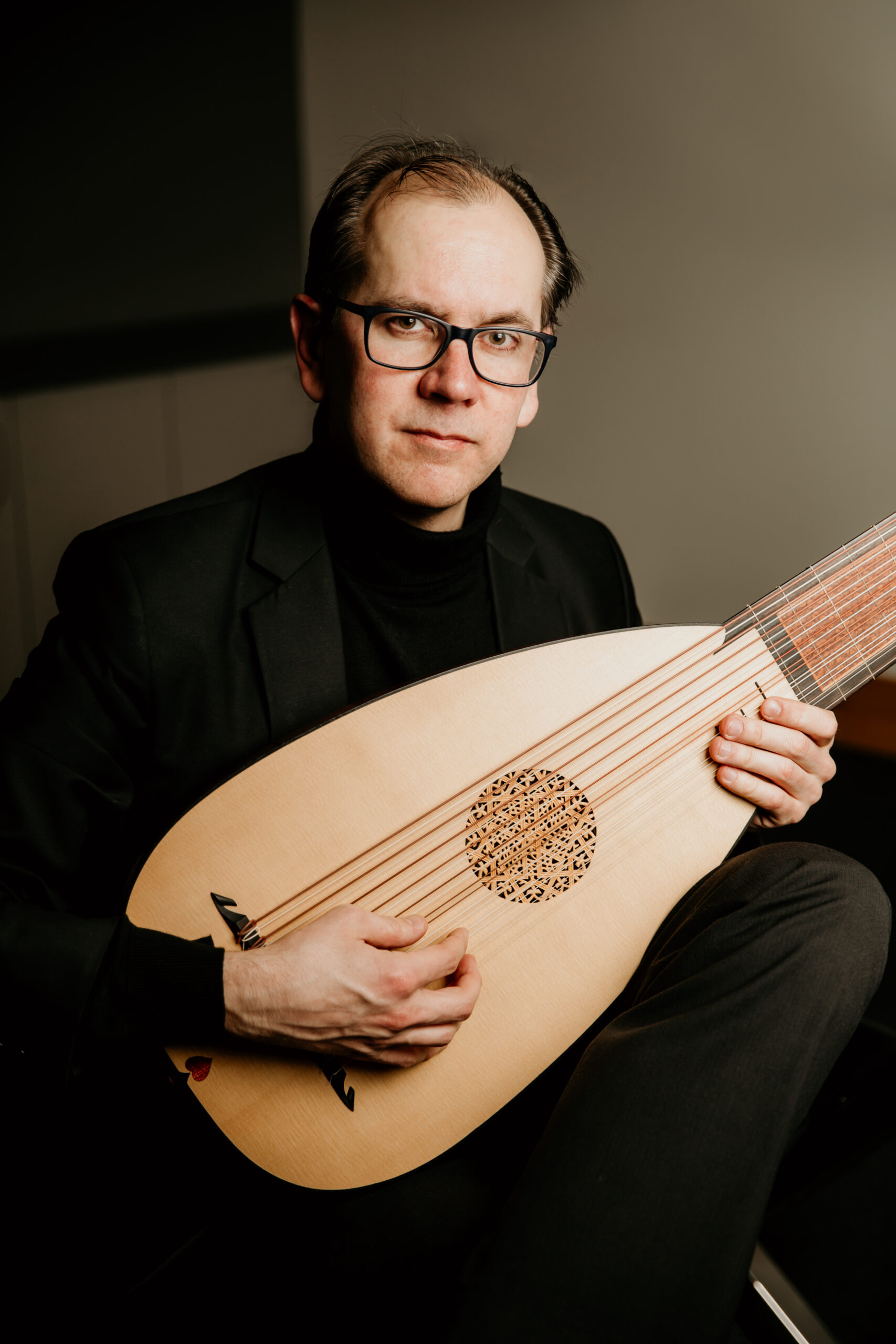
Lucas Harris, theorbo
Toronto-based Lucas Harris discovered the lute during his undergraduate studies at Pomona College, and went on to study the lute and early music at the Civica scuola di musica di Milano and at the Hochschule für Künste Bremen. He is a founding member of the Toronto Continuo Collective, the Vesuvius Ensemble and the Lute Legends Collective (an association of specialists in ancient plucked-string traditions from diverse cultures) and is the regular lutenist for Tafelmusik Baroque Orchestra. Lucas plays with many other ensembles in Canada and the USA and has worked with the Smithsonian Chamber Players, Atalante, and Jordi Savall / Le Concert des Nations amongst others.
He teaches at the Tafelmusik Summer and Winter Baroque Institutes, Oberlin Conservatory’s Baroque Performance Institute, and the Canadian Renaissance Music Summer School, and is a regular guest artist with Early Music Vancouver. Lucas is also the Artistic Director of the Toronto Chamber Choir, for which he has created and conducted more than twenty themed concert programs. One of Mr. Harris’ many pandemic projects was the reconstruction of 12 solo voice motets by the Italian nun Chiara Margarita Cozzolani.
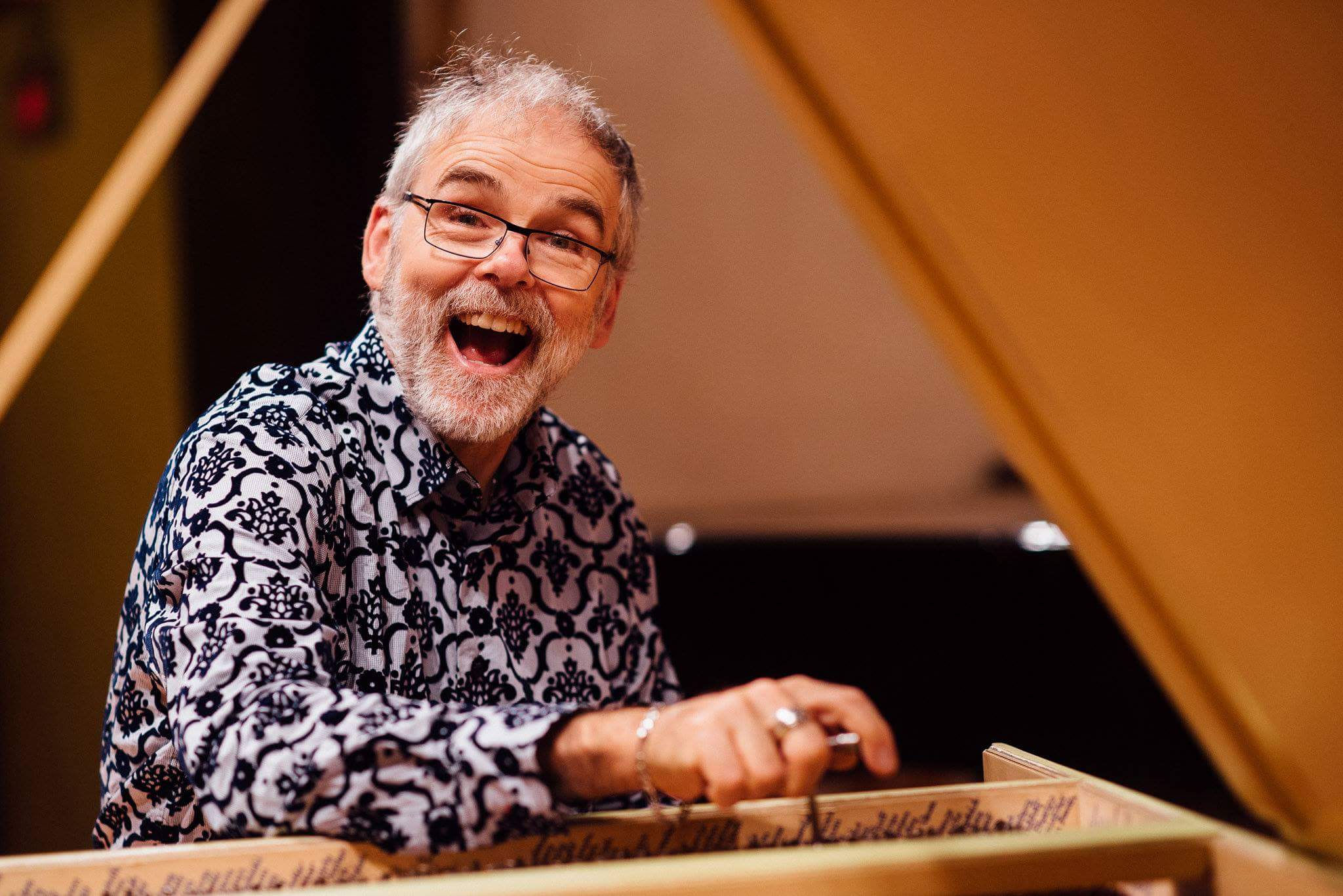
Michael Jarvis, organ and harpsichord
Michael Jarvis is one of Canada’s finest harpsichordists, fortepianists and continuo players and is in demand as a collaborative artist. In addition to performing across Canada, he has performed as soloist and continuo player throughout the USA, England, Italy and Bermuda.
Michael Jarvis may be heard on the Marquis Classics, Hungaroton, ATMA, Naxos, Solitudes and Avalon CD labels, and has often broadcast nationally and regionally for the CBC, as well as nationally across the US on NPR. He and violinist Paul Luchkow’s CD of Hummel’s op. 5 violin sonatas was chosen as a finalist as best classical album of the year in the Western Canadian Music Awards 2013. His most recent CD with Paul, Michel Corrette’s Sonatas for Harpsichord and Violin, Op. 25 (on mythological themes), was released to excellent reviews on the Marquis CD label in Spring 2017.
Michael was featured on two national Canadian television specials for Bravo: “A Baroque Christmas” and “A Baroque Easter”. He was also co-host and star of the 13-part television series “Come into the Parlour” for Bravo-TV. He was recently appointed conductor of the Bach on the Rock chamber choir and orchestra on Salt Spring Island.
He has taught harpsichord and continuo and lectured many times at the University of Toronto. He has taught harpsichord performance at Wilfred Laurier University in Waterloo, Ontario and at Havergal College, Toronto, and taught fortepiano at UBC.
When he is not playing early music, Michael is an avid collector of early jazz and early opera 78 rpm recordings and is an early phonograph restorer. Michael lives in Victoria, BC.
Note: Michael Jarvis tragically passed away on December 25, 2020. His obituary can be found here.

